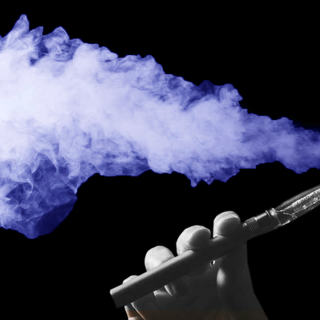How many times have you heard that smoking marijuana is healthier than puffing on cigarettes, that it’s more organic, and has practically no side- effects? Such rhetoric has increasingly accompanied legalization and subsequent commercialization of marijuana use worldwide. But the little, not-so-credible research done into the use and effects of marijuana use doesn’t say any of the positive things people spout off about marijuana use— some of it even says the opposite, according to a report published by the National Academy of Medicine.
Here are the things we know:
With almost 100% certainty:
Marijuana use helps with chronic pain, chemotherapy-induced nausea and spasticity symptoms resulting from multiple sclerosis. On the flip side, researchers are very sure smoking marijuana exacerbates respiratory symptoms, causing chronic bronchitis. Marijuana use increases the risk of motor vehicle accidents, could lower the birth weight of offspring, and saving the big blow for the last: smoking marijuana could cause schizophrenia and other psychoses, especially amongst high frequency users.
In Tell Your Children: The Truth About Marijuana, Mental Illness, and Violence written by Alex Berenson, a psychiatrist specializing in schizophrenia reported that older patients from stable middle-class backgrounds and professions, who only smoked marijuana and no other drugs seemed to be developing a mental disorder that looked like schizophrenia, but the symptoms were worse: their paranoia did not respond to antipsychotics, the New Yorker reported. The article further states that in the book, Erik Messamore, the psychiatrist, said that THC, a common component found in marijuana, damaged nerve cells and blood vessels in the brain.
The New Yorker further reports that the first state in the U.S. to legalize marijuana, Washington, witnessed a 17% hike in rates of aggravated assault, a 44% increase in murder rate, since legalization. “Berenson, though, finds it strange that, at a time when Washington may have exposed its population to higher levels of what is widely assumed to be a calming substance, its citizens began turning on one another with increased aggression,” the New Yorker states.
Another study published in the The Lancet found that “the odds of psychotic disorder among daily cannabis users were 3.2 times higher than for never users” and “the odds among users of high-potency cannabis were 1.6 times higher than for never users.” They also found that in cities with the highest consumption of potent cannabis (i.e., marijuana with high THC levels), the odds for psychotic disorder increased exponentially: four times in Paris, five times in London, and nine times in Amsterdam. These findings, however, don’t predict a causal relationship between marijuana and psychosis, just a correlation, which begs more research into connection.
With a moderate level of confidence:
Marijuana may help to improve sleep apnea symptoms and fibromyalgia; marijuana smoking has almost no association with lung, head and neck cancer; it probably doesn’t make schizophrenia any worse if you have it. As for the negatives: Smoking marijuana might increase the risk of overdose injuries amongst kids; it may impair memory, attention and learning skills; bipolar people who smoke it might have more manic episodes; it may increase suicidal ideation, suicide attempts, and deaths by suicide; marijuana use can increase the risk of developing a social anxiety disorder (contrary to popular belief); and can enable people to increase their abuse of tobacco, alcohol and other hard drugs.
With some evidence, which is not completely reliable:
There’s limited evidence to prove marijuana use impairs educational achievements, social functioning, and increases rate of employment. We also can’t confidently say that smoking marijuana improves Tourette’s, anxiety symptoms, or post-traumatic stress disorder symptoms.
With zero evidence, despite widely held beliefs in popular culture:
Popularly held beliefs that marijuana helps deal with symptoms of cancer, epilepsy, Huntington’s disease, Parkinson’s disease, asthma, irritable bowel syndrome, and immunity-related issues are baseless. There is no credible research done into these particular diseases and their relationship with marijuana use.
The only thing we know is the cannabis compound called cannabidiol (CBD) could have therapeutic value for seizures due to epilepsy. But CBD is not present in most strains of marijuana consumed daily, and isdevoid of THC,according to the World Health Organization.
*
There is a big push to legalize marijuana in India, with prominent police figures such as Shashi Tharoor speaking out in favour. In August 2017, the government issued a license to grow medical marijuana, following which Uttarakhand became the first Indian state to grow it industrially, Scroll reported. While there is a concern that legalizing medical marijuana will promote the drug’s use amongst Indian youth, most advocates believe that the drug’s advantageous effect on reliving medical symptoms is a given. Currently, pro-marijuana amendments to the Narcotic Drugs and Psychotropic Substances Act, proposed by a Member of Parliament from Patiala, Dharam Vir Gandhi, are pending.
As politicians all over the world wrestle with legalizing marijuana and how to control its use amongst the public, it is imperative to fund a research framework to understand the effects of cannabis. Withoutmore information, we won’t ever know exactly what it is we’re legalizing.




